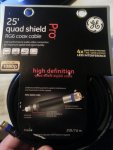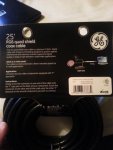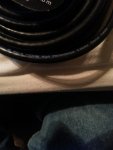The 48" and 18" inch lengths of the elements are designed to produce the best frequency resonances ("troughs") at the center of the greatest number of common scanner bands.... i.e. 30-50 mHz, 136-174 mHz, 430-500 mHz, etc. Look at the specs for any scanner and you'll see the covered frequency ranges listed; those broad ranges of freqs are what the OCFD in the RR Antenna Wiki is designed to cover. If you alter the length of the elements, you change the resonant points of the OCFD. If you want to experiment, get an antenna analyzer such as those made by Comet, MFJ, or Sainsonic. If you just want something that works to cover the major scanner bands, build it to the dimensions shown. A lot of people have spent a lot of time experimenting and testing... and have come up with the 18 and 48 inch lengths.
And yes, if possible keep the leads from the TV transformer to the elements close together. Remember too that at lower frequencies the coax feed line tends to become part of the antenna, and moving it around may improve reception. Also, the feed line should come away from the antenna at a 90 degree angle for at least 3 feet or so.... don't let it run parallel to either antenna element.
Finally - some people reporting problems with their home-brew OCFD have discovered that their 75 to 300 ohm TV transformer they pulled out of the junk box was defective.... even sometimes a new one. This was also a common problem with the popular Antennacraft ST-2 antenna. If something doesn't seem right, the TV transformer is one of the first things to check (use a multimeter to check the coax, connectors, and continuity to the OCFD elements).
And yes, if possible keep the leads from the TV transformer to the elements close together. Remember too that at lower frequencies the coax feed line tends to become part of the antenna, and moving it around may improve reception. Also, the feed line should come away from the antenna at a 90 degree angle for at least 3 feet or so.... don't let it run parallel to either antenna element.
Finally - some people reporting problems with their home-brew OCFD have discovered that their 75 to 300 ohm TV transformer they pulled out of the junk box was defective.... even sometimes a new one. This was also a common problem with the popular Antennacraft ST-2 antenna. If something doesn't seem right, the TV transformer is one of the first things to check (use a multimeter to check the coax, connectors, and continuity to the OCFD elements).
Last edited:




